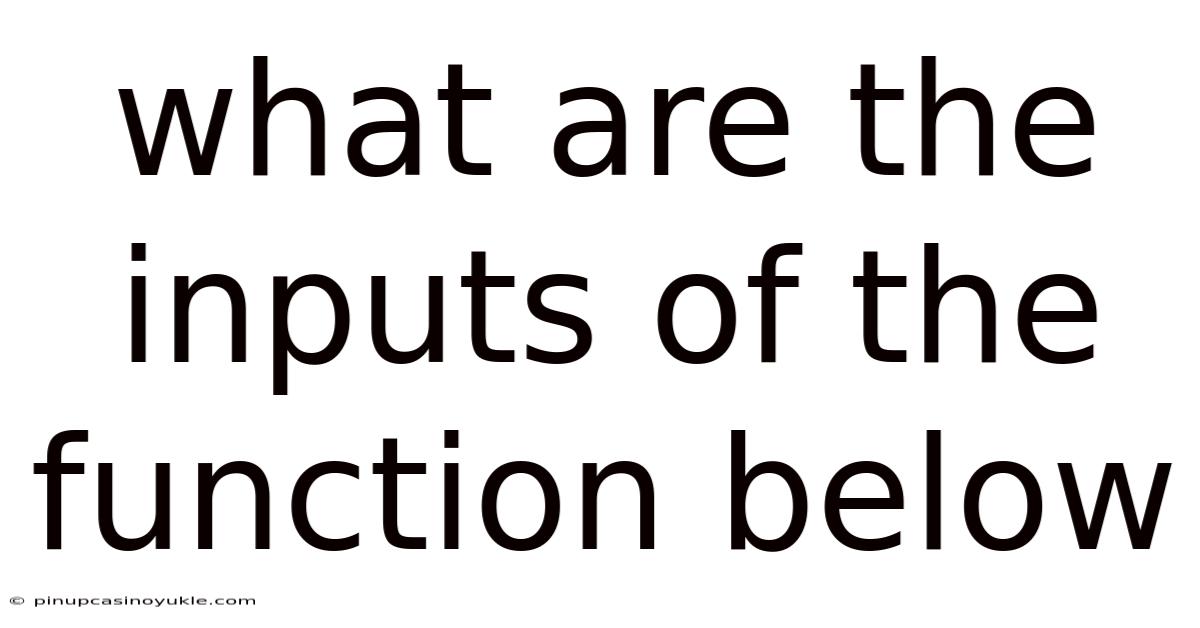What Are The Inputs Of The Function Below
pinupcasinoyukle
Nov 27, 2025 · 12 min read

Table of Contents
Let's analyze the inputs a function can receive. Understanding the types of inputs a function can handle is crucial for writing robust, predictable, and maintainable code. Whether you're working with a simple function that adds two numbers or a complex algorithm that processes large datasets, knowing the expected inputs and how to handle them is essential.
Types of Function Inputs
Function inputs, also known as arguments or parameters, are the data that you pass into a function when you call it. These inputs allow you to customize the behavior of the function and make it more versatile. A function can accept zero, one, or multiple inputs. The type of inputs can vary widely, depending on the function's purpose.
Here's a breakdown of common input types:
-
Primitive Data Types: These are the basic building blocks of data in most programming languages.
- Integers: Whole numbers, both positive and negative (e.g., -2, -1, 0, 1, 2, 100).
- Floating-Point Numbers: Numbers with decimal points (e.g., 3.14, -2.5, 0.0).
- Characters: Single letters, symbols, or numbers represented as text (e.g., 'a', 'Z', '7', '
Latest Posts
Latest Posts
-
Dna Structure And Replication Answer Key
Nov 27, 2025
-
Mean Value Theorem Vs Intermediate Value Theorem
Nov 27, 2025
-
How To Calculate Iqr On Excel
Nov 27, 2025
-
How To Draw A Newman Projection
Nov 27, 2025
-
Is Secant The Opposite Of Cosine
Nov 27, 2025
Related Post
Thank you for visiting our website which covers about What Are The Inputs Of The Function Below . We hope the information provided has been useful to you. Feel free to contact us if you have any questions or need further assistance. See you next time and don't miss to bookmark.